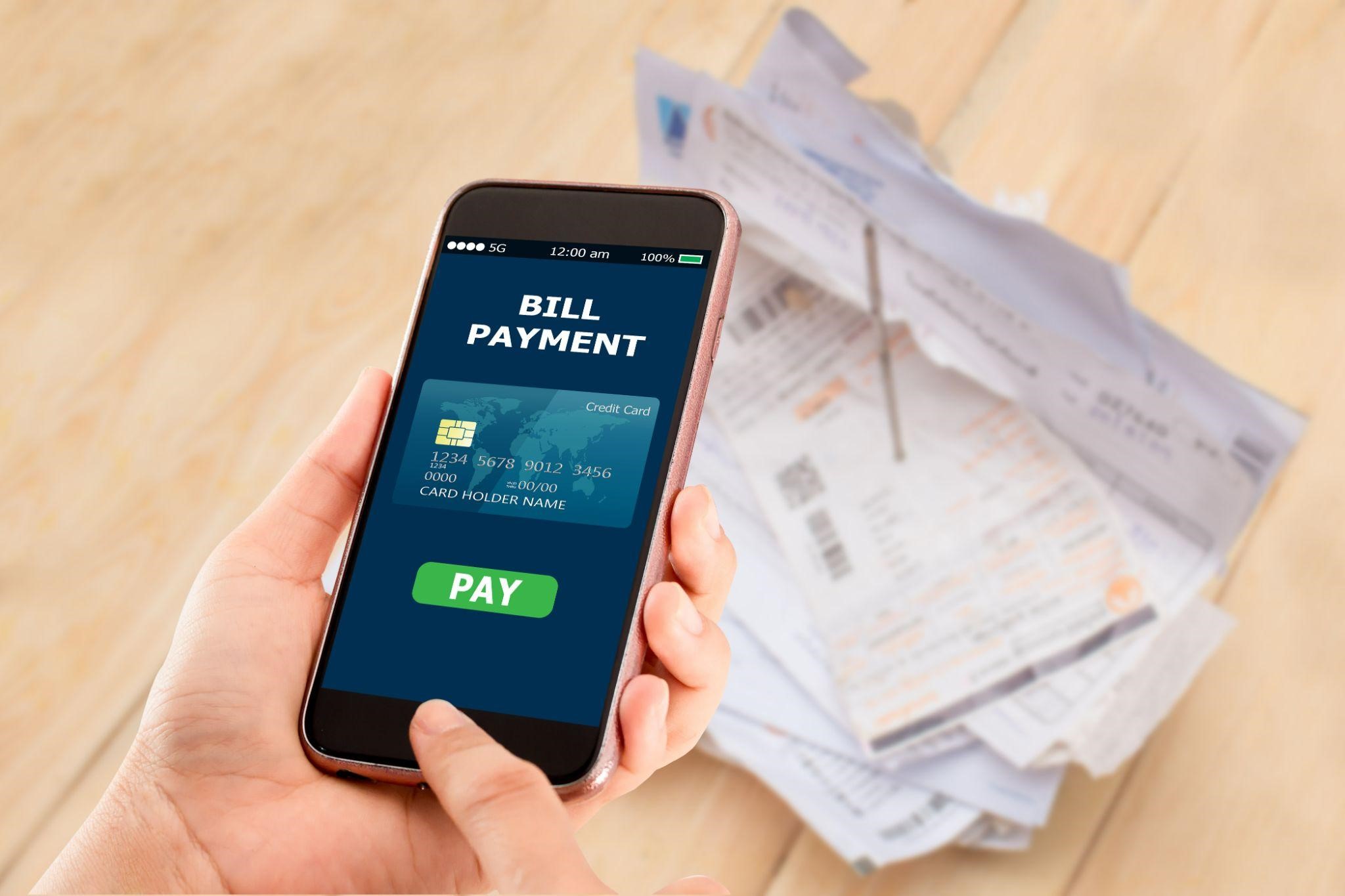Minimum Amount Due in Credit Card – Calculation and Benefits

What is the Minimum Due Amount on Credit Cards?
The minimum amount due on your credit card statement is the minimum amount you are required to pay by the payment due date. Typically, it is 5% of the total outstanding balance. In addition to the expenses incurred in this particular billing cycle, the credit card minimum payment will also include any unpaid dues from the previous billing cycle and EMI payment conversions that you may have opted for. Bear in mind that in case you choose to pay only the credit card minimum payment, interest will be applied only on the outstanding balance and not the total amount.
How to Calculate the Minimum Amount Due on a Credit Card?
While different card issuers may adopt different methods to arrive at the credit card minimum payment, we will only discuss a couple of methods that are widely used. They are as follows:
Method 1: A percentage of the balance amount plus finance charges
Some issuers calculate the minimum amount due on a credit card as a percentage of the balance at the end of the billing cycle in addition to the finance charges. For example, 1% of the balance and accrued interest. Suppose you have accrued a balance of ₹1,000 on your card. Let us assume that the annual rate (APR) applicable on your card is 24%. Then, the minimum payment will be 1% of ₹1,000, which is ₹10, plus the monthly loan fee, which let us assume is ₹20. So, the credit card minimum payment in this case is ₹30.
Method 2: A percentage of the remaining balance
Some credit card providers calculate minimum payment as a direct percentage of their balance at the end of a billing cycle. This percentage is generally higher than that of method 1. It is typically between 2% and 5%, and is applicable to both the principal and the interest components. Let’s say, you have run up a bill of ₹1,000 at the end of a billing cycle. Then, calculated at 2% of that balance, the minimum amount due on your credit card is ₹20 (=2/100×1000).
Also Read
Minimum Amount Due on a Credit Card Calculation
Let’s say that your card issuer generates the statement on the 20th of each month and charges a rate of 3.5% per month on your card. The minimum amount due is set at 5% of the outstanding balance. Let us assume that the due date is the 2nd of the following month.
For the sake of simplicity, let us assume that the card issuer considers the total balance accrued till 20th of each month as the outstanding balance for that month.
Example:
Let us assume that you have made two transactions of ₹1,000 and ₹4,000 respectively on your card before the cut-off date for the billing cycle. So, the total billing amount for this cycle is ₹5,000 and the minimum amount due will be 5% of ₹5,000 = ₹250. This is how a summary of your bill may look:
| Date of Transaction | Outstanding balance | Comment |
| 10th of the month | ₹1,000 | No interest charge |
| 12th of the month | ₹4,000 | No interest charge |
| 20th of the month | ₹5,000 | Statement generated. Minimum amount due is ₹250 (calculation shown above). Let’s say you decide to pay only the minimum amount on the due date. |
| 2nd of the next month i.e. due date for the billing cycle | ₹(5,000-250)= ₹4,750 is the new outstanding balance | A rate of 3.5% per month will apply to this amount |
Benefits of Paying the Minimum Amount Due on Your Credit Card
- Helps avoid payment defaults
- Keeps your account active and helps avoid penalties
- Helps keep your account active without the credit card company reporting your account as irregular
While there are undoubtedly some benefits of paying the minimum amount due, the disadvantages far outweigh the advantages. In fact, most financial experts will advise you to pay off the total amount due on your credit card without fail. In the following section, let us turn our attention to disadvantages of paying the minimum due on credit card.
Disadvantages of Paying the Minimum Amount Due
- The unpaid dues will continue to attract high interest rates even if you manage to avoid the steep late payment charges
- You will not enjoy the benefit of an interest-free period that is typically reserved only for those who clear the total amount due on their credit cards
- If you continue to pay off only the minimum due, you will continue to record high credit utilisation ratio, which could negatively affect your credit score and reduce your ability to obtain loans in the future
What Happens If You’re Unable to Pay Your Credit Card Bill Before the Due Date?
If you do not pay the minimum payment on the credit card amount by the due date, you will incur charges on the unpaid invoice. These charges typically range from 30% to 49% per year on unpaid amounts. Unpaid due can also lead to the cancellation of interest-free periods for new credit card transactions. Failure to repay the minimum amount will also adversely affect your creditworthiness.
If you cannot fully repay your credit card invoice by the due date, you can convert all or part of your credit card invoice to an EMI. This helps reduce the interest burden, as the interest rate for such EMI conversions is much lower than the actual cost. The duration of such EMI conversions can range from 3 months to 5 years, depending on the card issuer and your credit profile. EMI conversion reduces interest costs for cardholders, saves funding costs for new card transactions, and allows unpaid dues to be repaid in smaller amounts based on repayment capacity.
What will Happen if You Pay Only Your Minimum Amount Due for a Long Period of Time?
Here are some major disadvantages of paying only the minimum amount due on your credit card for a long period of time:
- You will continue to attract high interest rates on the outstanding balance, which will increase your cost of borrowing incrementally
- The card issuer will withdraw the benefit of interest-free period, which means that you will continue to attract high interest rates on the outstanding balance for a long time
- Your credit limit will considerably decrease, which will limit your ability to spend
- Your creditworthiness will be severely impacted
Final Word
Paying the minimum amount due on credit cards within the due date can prevent your credit score from plummeting. However, there are quite a few disadvantages that we have already highlighted above – such as paying higher interest, not getting a grace period, and having to live with a lower credit limit and score. So, it is advisable that you utilise the credit available on your credit wisely and continue to pay off the total amount due on your credit card in full every month.
However, if you need a loan to consolidate your debt or pay off your dues, you could consider getting a Navi Instant Cash Loan. With this loan, you can get up to ₹20 Lakh at interest rates, as low as 9.9% p.a. And that too with minimum documentation and zero hassle! To apply for a loan, download the Navi App today and get started!
FAQs
A secure credit card works like a regular credit card. The only difference between a standard credit card and a secure credit card is that the latter is issued against collateral such as deposits to reduce the risk level of the card issuer. A secure credit card is helpful for people who have no or inadequate credit history.
You can find out if you are eligible for a credit card by checking the eligibility criteria posted on the bank’s website. You can also contact the customer service department of your credit card issuer to verify your eligibility.
The credit limit is the maximum amount of credit that a credit card can accept. The applicant’s credit limit depends on its profile, repayment capacity, and CIBIL credit report. However, you can request this from your provider to raise your credit limit.
Yes, you can withdraw cash from ATMs with your credit card. However, withdrawing cash with a credit card will incur additional charges ranging from 2.5% to 3.5%.
The total unpaid amount is the same as the total spending of the card in a particular billing cycle, but the minimum unpaid amount is only a small part of the total amount used. You do not have to pay any additional charges if you pay the full amount with a card. On the other hand, if you pay the minimum payment or more than the minimum payment and less than the total payment, it indicates that your balance will be charged interest.
Yes, it could. If you continue to pay only the minimum amount due on your credit card for a long time, it will not only reduce your credit limit, but will also affect your credit score.
You can continue to pay just the minimum amount due every month. However, remember that you may have to bear much higher borrowing costs as the interest rate applicable will be much higher.
Yes, most card issuers charge interest between 2% and 5% on the outstanding balance, after you pay the minimum amount due.
Yes, of course. You can pay more than the minimum amount, the full amount, or an amount in between the two. The choice is yours.
The minimum amount due on your credit card is the amount that you must pay before the due date to ensure that your credit card account remains active and you can avoid penalties. The total amount due is the total balance on your card at the end of a billing cycle. It is advisable that you pay off the total amount due within the due date to enjoy interest-free borrowing.
Please note that if you don’t pay even the minimum amount due by the payment due date, you may have to deal with higher interest charges on the total amount due on your credit card in addition to late payment fees. It will also have a negative impact on your credit score.
This article has been prepared on the basis of internal data, publicly available information and other sources believed to be reliable. The information contained in this article is for general purposes only and not a complete disclosure of every material fact. It should not be construed as investment advice to any party. The article does not warrant the completeness or accuracy of the information, and disclaims all liabilities, losses and damages arising out of the use of this information. Readers shall be fully liable/responsible for any decision taken on the basis of this article.

Customer’s Feedback
No comments found.10 Best Bank for Savings Account in India [Highest Interest Rate 2023]
Savings account is a type of financial instrument offered by several banks. It lets you safely depo... Read More »What is Issuer Identification Number (IIN)- Working and Importance
What is an Issuer Identification Number (IIN)? Banks and financial institutions assign a distinc... Read More »What is a Vostro Account – Meaning, Working and Difference
What is a Vostro Account? A Vostro account is a bank account held by a domestic bank on behalf o... Read More »What is a Solvency Certificate? – Format, Documents Required & How to Apply Online?
What is a Solvency Certificate? A solvency certificate is a legal document furnishing the detail... Read More »What is Merchant Banking – Services, Features, Functions and Example
What is Merchant Banking? Merchant banking is a set of select banking and financial services off... Read More »Automated Clearing House: Objectives, Types and Process
Automated Clearing House is an electronic fund transfer network that manages automatic and direct... Read More »How to Redeem Credit Card Reward Points ?
Credit Card Reward points are types of incentives that customers receive when they use a credit car... Read More »What is Electronic Clearing Service (ECS) in Banking and How does it Work?
What is Electronic Clearing Service (ECS)? Electronic Clearing Service (ECS) is a method of elec... Read More »What are Credit Card Validators and How to Use them?
What is a Credit Card Validator? A credit card validator is a tool that checks the validity of a... Read More »What is Cash Management and How Does it Work?
Managing available capital can make sure that a small business stays afloat. Cash management is an ... Read More »What are Prepaid Expenses? – Definition, Examples, and Journal Entry
Prepaid expenses represent payments made in advance for products or services expected to be incurre... Read More »Increase Credit Card Limit – Important Tips and How to Do It?
The credit card limit is the maximum amount of money you can spend using your credit card. Your cre... Read More »Top 10 Chit Fund Schemes in India in 2023
Chit funds are one of the most popular return-generating saving schemes in India. It is a financial... Read More »10 Best Gold ETFs in India to Invest in April 2023
Gold ETFs or Gold Exchange Traded Funds are passively managed funds that track the price of physica... Read More »10 Best Demat Accounts in India for Beginners in 2023
Creation of Demat accounts revolutionised the way trades were conducted at the stock exchanges. It... Read More »20 Best Index Funds to Invest in India in April 2023
What is an Index Fund? An index fund is a type of mutual fund or exchange-traded fund (ETF) that... Read More »Best Arbitrage Mutual Funds to Invest in India in April 2023
Arbitrage funds are hybrid mutual fund schemes that aim to make low-risk profits by buying and sell... Read More »10 Best SIP Plans in India to Invest in April 2023
What is SIP? SIP or Systematic Investment Plan is a method of investing a fixed amount in ... Read More »10 Best Corporate Bond Funds in India to Invest in April 2023
Corporate bond funds are debt funds that invest at least 80% of the investment corpus in companies ... Read More »10 Best Bank for Savings Account in India [Highest Interest Rate 2023]
Savings account is a type of financial instrument offered by several banks. It lets you safely depo... Read More »





















